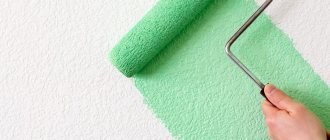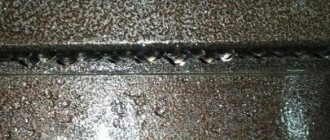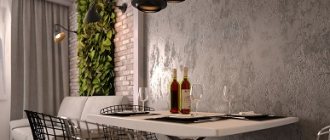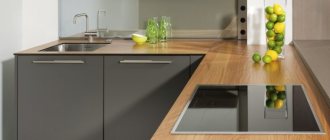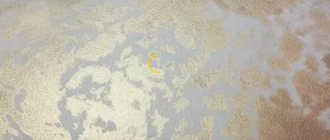Polyvinyl chloride or PVC is a popular material from which many parts, structures and products are made. Over time, the surface of this material wears out, abrasions appear on it, the paint fades, in which case the question arises, how and with what to paint PVC? Sometimes it is necessary to paint metal-plastic windows and doors in a different color so that they fit better into the interior design, or there is a need to protect the surface from destruction and fading. To process smooth PVC, not just any paint will do, especially if you need to paint plastic car parts, a soft inflatable PVC boat, plastic pipes or any other products.
Paint requirements
The main requirement for PVC paint is a high adhesion rate (adhesion to the surface). Polyvinyl chloride differs from wood, brick and concrete in that it has a very smooth and slippery surface, the structure is quite dense and hard, as a result of which plastic cannot be painted with any type of composition. The paint must have the following characteristics and properties:
- resistance to moisture, water;
- high strength;
- resistance to mechanical damage;
- preservation of the shade throughout the entire service life;
- resistance to ultraviolet rays;
- the composition must be environmentally friendly, safe for humans, without toxic, poisonous components that could be released into the air during heating;
- resistance to temperature changes;
- long service life;
- large selection of shades;
- the ability to give the object being painted some kind of texture.
In addition to all the above properties, it is important to choose a composition that you can easily paint with your own hands at home.
Polyurethane-acrylic paints
These dyes fully comply with all the necessary characteristics, these compositions are made on a water basis, they are often used to paint PVC, for example, plastic windows or other structures. Polyurethane-acrylic mixtures create a uniform coating that is resistant to scratches and other defects. The dye dries quickly enough on the PVC surface; if desired, you can tint the composition yourself. Thanks to these dyes, you can easily and quickly paint PVC, and it is possible to create any textured effects if you add special ingredients to the base paint.
Polyurethane-acrylic paints are made in a huge range of colors; the catalog contains more than two thousand different shades. In addition to traditional colors, manufacturers offer:
- pearlescent paints;
- with sparkles;
- metallic
Using such extraordinary dyes, you can paint any PVC surface in a unique and original way.
The process of painting a plastic door
Having prepared the plastic door structure and decided on the type and color of paint, we move on to the process itself.
This is what the technology of painting using spray enamel paint looks like:
- Shake the can of paint well for 1 minute.
- Apply the coloring composition from a distance of 25 cm.
- The first layer is applied thinly and evenly, after which it is allowed to dry a little.
- After 20–25 minutes, apply the second layer.
- After the paint has dried, remove the film and masking tape.
Dyeing process
Preparation before painting
Before painting any PVC product, for example, a window sill, plastic windows, or anything else, it is important to properly prepare the surface. Preparation includes:
- dismantling all structural elements that will interfere with painting. For example, you need to remove the tide, tulle, curtain, blinds, mosquito net and other items from the window;
- any contaminants are removed from the surface, for example, dust, cobwebs, debris, dirt, etc.;
- grease stains are removed using a solvent;
- Construction (painting) tape protects all fittings, rubber seals and other elements so that paint does not get on them. When the painting solution has dried, the masking tape must be removed immediately, otherwise it will be much more difficult to remove it after a few days;
- It is advisable to cover the glass with cellophane film, or you will have to remove the paint from the glass surface with a rag immediately before it dries.
To carry out high-quality, effective cleaning, degrease the surface and remove static stress from it, you can purchase a special activator cleaner in the store, which is designed specifically for PVC. This cleaner is applied to a cloth or rag, and the entire surface is thoroughly wiped with it. After wiping, the composition should completely evaporate, this usually takes about 10 minutes, after which you can paint the PVC with the chosen paint.
If there are scratches, any defects, chips or roughness on the surface, they are covered with a special putty compound, after which the structure is sanded with fine-grained sandpaper. After sanding, it is recommended to treat the PVC with a primer mixture. If you have experience and skills in the field of repair and finishing work, then you can do the filling and sanding yourself, but if you lack experience, it is advisable to seek the services of specialists.
Preparing the surface for painting
We paint PVC with our own hands
Painting a plastic profile with water-based acrylic paints has certain advantages, including:
- preparatory work is carried out quickly;
- the surface dries quickly at room temperatures;
- within 8-10 hours the finish gains strength at a temperature of only 20o;
- painting can be done either manually or with automatic sprayers;
- the paint has great decorative features (imitation wood, mother-of-pearl, metallic, etc.).
An important point before applying paint to a product is its preliminary preparation.
First of all, you must be sure that there is no dirt, silicone or polyurethane foam residues, greasy marks or other debris on the surface that will prevent strong adhesion of the plastic to the paints.
To properly prepare the surface, you can follow the following instructions:
- using a cloth or compressed air, remove crumbs and debris from the surface of the product;
- soak with specialized cleaning agents that are made specifically for polystyrene;
- remove grease and other lubricant mixtures from the surface, thereby removing static tension;
- Allow the surface 10-15 minutes for the cleaner to evaporate.
Following the advice of experts, it is better to purchase a specialized cleaner-activator for PVC, which, when applied, forms micropores on the surface that improve the adhesion of materials to each other.
Another known method for increasing adhesion is sanding the plastic and then priming it. But, this process is much more complicated and requires certain skills and experience from the master.
Related article: Advantages of MDF panels for doors and arches
Coloring rules
In order to properly paint metal-plastic windows or plastic car parts made of polyvinyl chloride, it is important to use special paint for PVC, which must be applied with a spray gun. As mentioned earlier, the best option is polyurethane-acrylic paint, which is pre-tinted to the desired shade, mixed thoroughly and poured into the spray gun container.
If, when opening a can of paint, there is a dense film on the surface of the composition, it must be removed, since this film contains solid particles that will not dissolve during mixing; they will quickly clog the spray nozzle. If the paint mixture has been frozen, it is no longer suitable for use, since in the cold the paint and varnish material loses its properties and characteristics, so it is simply thrown away.
Important! To paint PVC products with high quality, you need to choose dry, not hot, sunny weather. If the air temperature is less than +5 degrees, it is not recommended to carry out painting work.
The coloring composition is applied to the surface of a plastic window or other product in a thin, uniform layer, without gaps or drips; the layer thickness should be in the range of 80-120 microns. When using a spray gun, there is no need to first paint corners and hard-to-reach places, because the polyurethane-acrylic composition adheres well to a vertical surface and does not flow from it. After about 3 hours, the dye will already adhere firmly to the plastic, but the completely colored layer will dry only after 2-3 days. For industrial painting, after applying paint and varnish material to a PVC window, accelerated drying is used in special chambers with an air temperature of +50 degrees for 2 hours.
Subtleties when painting surfaces
Choosing paint for PVC
It is better to paint plastic in one layer at room temperature. Pre-application of primers is not required here.
If you have the opportunity to use a spray bottle for work, this way the coating will be done better. Also, paints and varnishes can be applied using brushes or a roller.
Materials for painting take about 8-10 hours to dry, it all depends on the temperature. But, you can use painted plastic only after 3 days. If you need, the coating can be repeated, but only after the first layer has completely dried.
It is also worth paying attention to the fact that in any room there are many objects that can cause a fire or be damaged in a fire. To avoid this situation, it is better to buy fire-retardant paint for painting, the thinner of which is ordinary water.
Related article: How to install roller shutters on a door
Aerosol cans
If you need to paint a small area of a window or other PVC product, you can purchase paint and varnish material in a can. This form of release is very convenient, thanks to it the paint is reliably protected from air penetration, so that a film never forms on the surface of the composition. Aerosol cans have many advantages:
- ease of transportation;
- You can easily and effortlessly paint small parts and hard-to-reach areas;
- no need to use any additional tools, such as a spray gun or brush;
- dyes in cans have an increased adhesion rate.
Aerosol paints are often used to process PVC automotive parts. In order for the paint coating to be uniform, without drips or gaps, certain skills and dexterity are needed, so first it is important to practice for a few minutes on some unnecessary product, after which, having gained a little experience, you can begin the main painting.
Preparing the plastic door surface
Painting is carried out in several stages, the first of which is preparing the plastic door surface. Sequencing:
- If there is a protective film, remove it. Do this carefully so as not to damage the plastic.
- This is followed by cleaning the surface from dust and small debris. A can of compressed air or a brush is suitable for this.
- The next step is to wet clean the structure from all kinds of dirt and greasy stains. For this, regular detergents or a special plastic cleaner are suitable, which will rid the product of dirt and at the same time remove static stress.
- To enhance adhesion, the surface is cleaned with fine sandpaper, after which it is washed again.
- The product is degreased with a solvent or antiseptic.
- After the surfaces have completely dried, if there are glass inserts, they are sealed with masking tape. The same goes for seals.
- If spray paint is used, to prevent it from getting on the walls, floor or ceiling when sprayed, all nearby surfaces are also covered with film.
- A PVC primer is applied to the frame and canvas in a thin, even layer. This is a translucent elastic composition that helps to better paint doors with any paint. The primer is performed by uniformly spraying the solution in a thin layer over the door leaf. It dries in 15–20 minutes, after which they proceed to the coloring itself.
Painted surface protection
Although polyurethane-acrylic and polyurethane paints and varnishes adhere well to polyvinyl chloride products, experts recommend additional protection of the painted dried layer. To do this, use special water-based varnishes, used specifically for plastic. In addition to protection, such varnishes create an attractive decorative layer, making the product shiny and beautiful.
You can varnish any painted structures, for example, metal-plastic windows or window sills, especially in places where the products are exposed to adverse factors and aggressive substances. It is advisable to varnish windows from the outside, where they are not affected by high and low temperatures, ultraviolet rays, and precipitation. You can apply the varnish with a regular brush; this does not require any skills or knowledge, so even a beginner in the field of painting can cope with this procedure.
Important! If you need to protect PVC pipes, window sills and other products located near an open fire, it is recommended to paint the surface with a special fire-retardant paint, which is also used for metal structures.
Important nuances
Before purchasing any amount of paint material, you first need to accurately calculate how much paint will be needed. To make a correct calculation, the first step is to take accurate measurements of the product or structure that will be painted. Thanks to the calculation, it is possible to determine the exact area of the object being processed. And if the dye is applied in two layers, then the consumption will accordingly increase by 2 times.
Although the cost of polyurethane and acrylic-urethane paints is quite high, these compositions have very low consumption and a long service life, which more than justifies the high costs of paint and varnish material.
If you need to paint soft PVC fabric, for example, a cover or an inflatable boat, then use the same polyurethane-acrylic paints. However, you must first apply a barrier layer, consisting, for example, of Feyco Universalprimer 2159, diluted with a solvent in a ratio of three to one. This barrier layer is applied from a spray gun with a thin film, its thickness should not exceed 25 microns. After this layer has dried, a polyurethane paint composition is applied.
To paint with high quality, it is important to strictly follow the instructions for applying the composition. For residential premises, be sure to choose paints without harmful, toxic components, made from environmentally friendly raw materials that are safe for human health. It is especially important to select such paints and varnishes if they will be used in medical institutions, children's rooms, and public catering establishments.
What is needed for coloring?
List of everything you need to paint a plastic surface:
- Film for covering the surface of the floor, walls and ceiling (if the doors are high), as well as glass inserts in the door leaf (if any).
- Masking tape used to secure the film and protect the seals.
- Cleaning agent – regular or special for plastic.
- A soft, lint-free napkin made of natural fabric for impregnation.
- Primer.
- A sheet of fine sandpaper.
- Brush.
- Depending on the type of paint, a brush, roller or spray gun is prepared.
- Coloring agent.
- If painting with a roller, use a container for paint.
- Protective clothing to prevent paint from getting on the body.
Doors before painting
